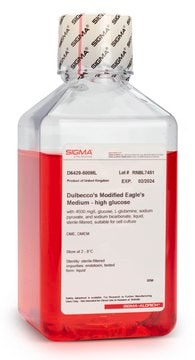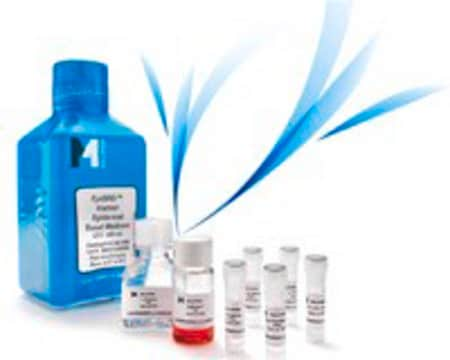추천 제품
제품명
CT-2A Mouse Glioma Cell Line, CT-2A mouse glioma cell line is a valuable mouse model for therapeutic research on brain malignancies.
생물학적 소스
mouse
기술
cell culture | mammalian: suitable
배송 상태
ambient
일반 설명
References:
1. Weller M, Cloughesy T, Perry JR, and Wick W (2013). Neuro Oncol 15(1): 4-27.
2. Seyfried TN, el-Abbadi M, and Roy ML (1992). Mol Chem Neuropathol 17(2):147-167.
3. Seyfried TN, Mukherjee P (2010). J Oncol 2010:961243 doi.10.1155/2010/961243.
4. Cotterchio M, Seyfried TN (1994). J Lipid Res 35(1): 10-14.
5. Binello E, Qadeer ZA, Kothari HP, Emdad L, Germano IM (2012). J Cancer 3: 166-174.
6. Martinez-Murillo R, Martinez A (2007). Histol Histopathol 22(12): 1309-1326.
7. Zimmerman HM and Arnold H. (1941). Cancer Res 1(12): 919-938.
Source:
CT-2A was generated from a malignant astrocytoma formed via implantation of the carcinogen 20-methylcholanthrene in the cerebrum of a C57BL/6J mouse (7). The tumor was maintained through serial intracranial transplants prior to cell line isolation.
세포주 설명
애플리케이션
Cancer
Oncology
품질
• Cells are tested negative for infectious diseases by a Mouse Essential CLEAR panel by Charles River Animal Diagnostic Services.
• Cells are verified to be of mouse origin and negative for inter-species contamination from rat, chinese hamster, Golden Syrian hamster, human and non-human primate (NHP) as assessed by a Contamination CLEAR panel by Charles River Animal Diagnostic Services.
• Cells are negative for mycoplasma contamination
저장 및 안정성
면책조항
Storage Class Code
12 - Non Combustible Liquids
WGK
WGK 2
Flash Point (°F)
does not flash
Flash Point (°C)
does not flash
시험 성적서(COA)
제품의 로트/배치 번호를 입력하여 시험 성적서(COA)을 검색하십시오. 로트 및 배치 번호는 제품 라벨에 있는 ‘로트’ 또는 ‘배치’라는 용어 뒤에서 찾을 수 있습니다.
활성 필터
자사의 과학자팀은 생명 과학, 재료 과학, 화학 합성, 크로마토그래피, 분석 및 기타 많은 영역을 포함한 모든 과학 분야에 경험이 있습니다..
고객지원팀으로 연락바랍니다.







